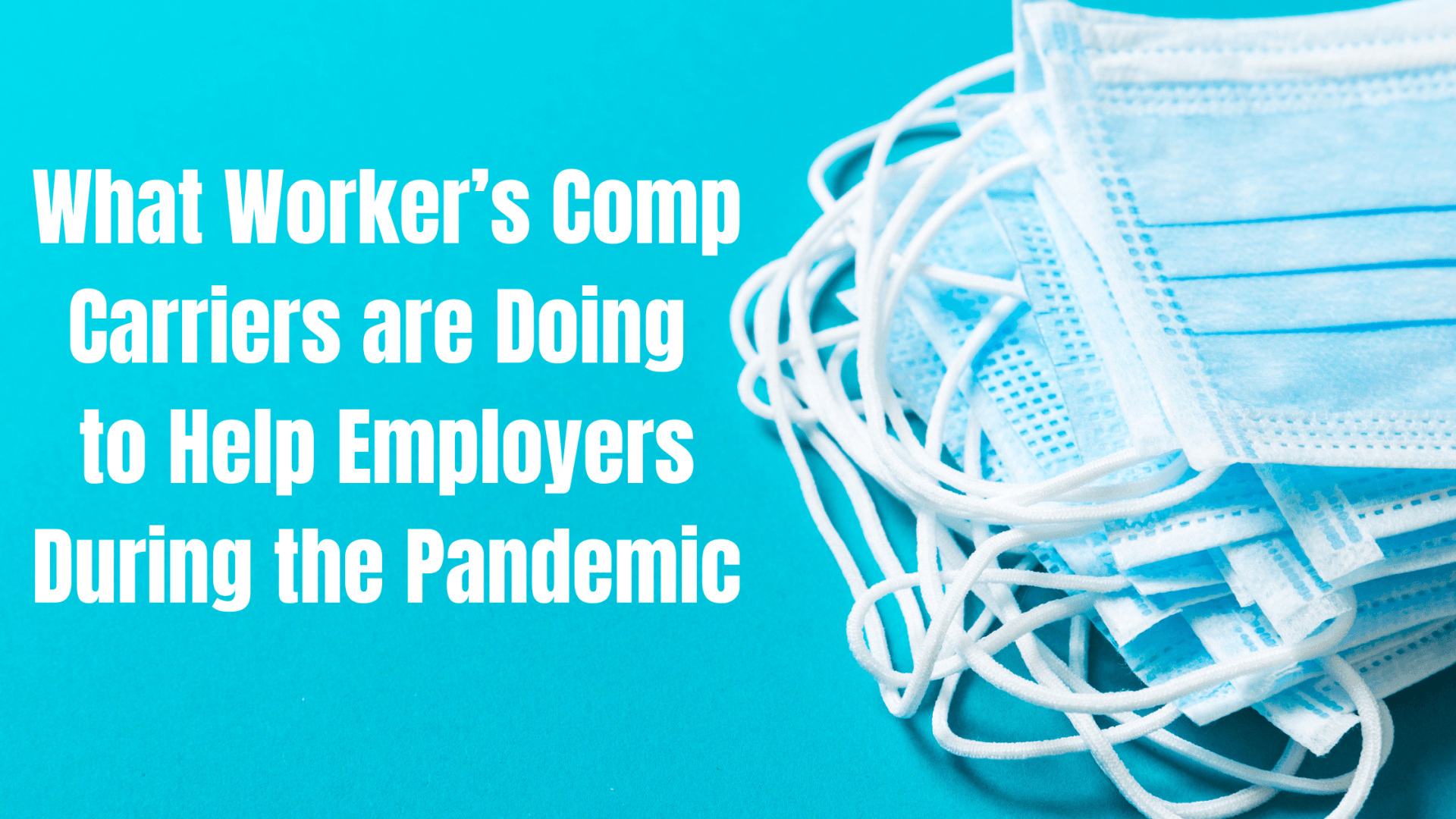
2020 has been a tumultuous year, to say the least. Employers are struggling to keep their doors open, and safety is the top priority everywhere. In the world of worker’s compensation, several carriers are implementing changes to their business models to try to ease some of the stress that employers have faced with unknowns in their payroll numbers to keeping their employees safe.
This year, almost every insurance company implemented extended grace periods for payments of insurance premiums due, and some of them gave discounts on their auto premiums or credits for reduced exposures while businesses were required to be closed. To assist businesses with financial strain, the State of NY Department of Financial Services implemented a moratorium on the cancellation of insurance policies for non-payment of premium for several weeks over the summer. Many carriers are continuing to work with policy holders who need relief from insurance premiums while their businesses are not doing well. Interest is being waived on audit premium financing with New Yok State Insurance Fund and most carriers will accept a revised payment arrangement if you speak with them. Check with your agent to see what your carrier is doing.
NY State Insurance Fund is also allowing their policy holders to apply for a credit to offset the cost of PPE during the pandemic. The program will offer a one-time credit of up to 5% of your annual premium (capped at $500). Equipment that qualifies includes, googles, masks, gloves, gowns, hand sanitizer and other COVID-19 related safety items. Speak with your agent to learn more.
In addition, the DFS announced on October 1, 2020 their approval of a decrease in the overall loss cost level of 1% and the worker’s comp board assessment, that covers that cost of operating the worker’s comp board and other various special funds, has reduced from 12.2% to 11.8%. This may result in a lower overall premium and as carriers try to make up for lowering premiums, we are finding that companies are competing for worker’s compensation more than any other line of business.
According to Paul Johnson of Employers, they are encouraging agents to share with their policy holders their Injured Employee Hotline. In the midst of the pandemic, injured employees are not interested in going to the hospital when they get hurt and exposing themselves to all of the potential exposure to Covid-19. Having a registered nurse that they can talk to 24 hours a day / 7 days a week – that will help to triage their injury without getting exposed to COVID is a huge benefit. Currently 40.7% of the claims called into the hotline result in self-administered first aid. The employer does not end up with a strike against their experience mod – the injured employee has the confidence of having involved a medical professional - it’s a win/win situation
Now more than ever it is important to maintain a working relationship with your insurance agent and keep up with special alerts from your insurance carriers as they come through so that you get all of the benefits that are available during this difficult time. SimcoHR is happy to help, and give us a call to speak to a professional agent.
Sign up for our newsletter.




